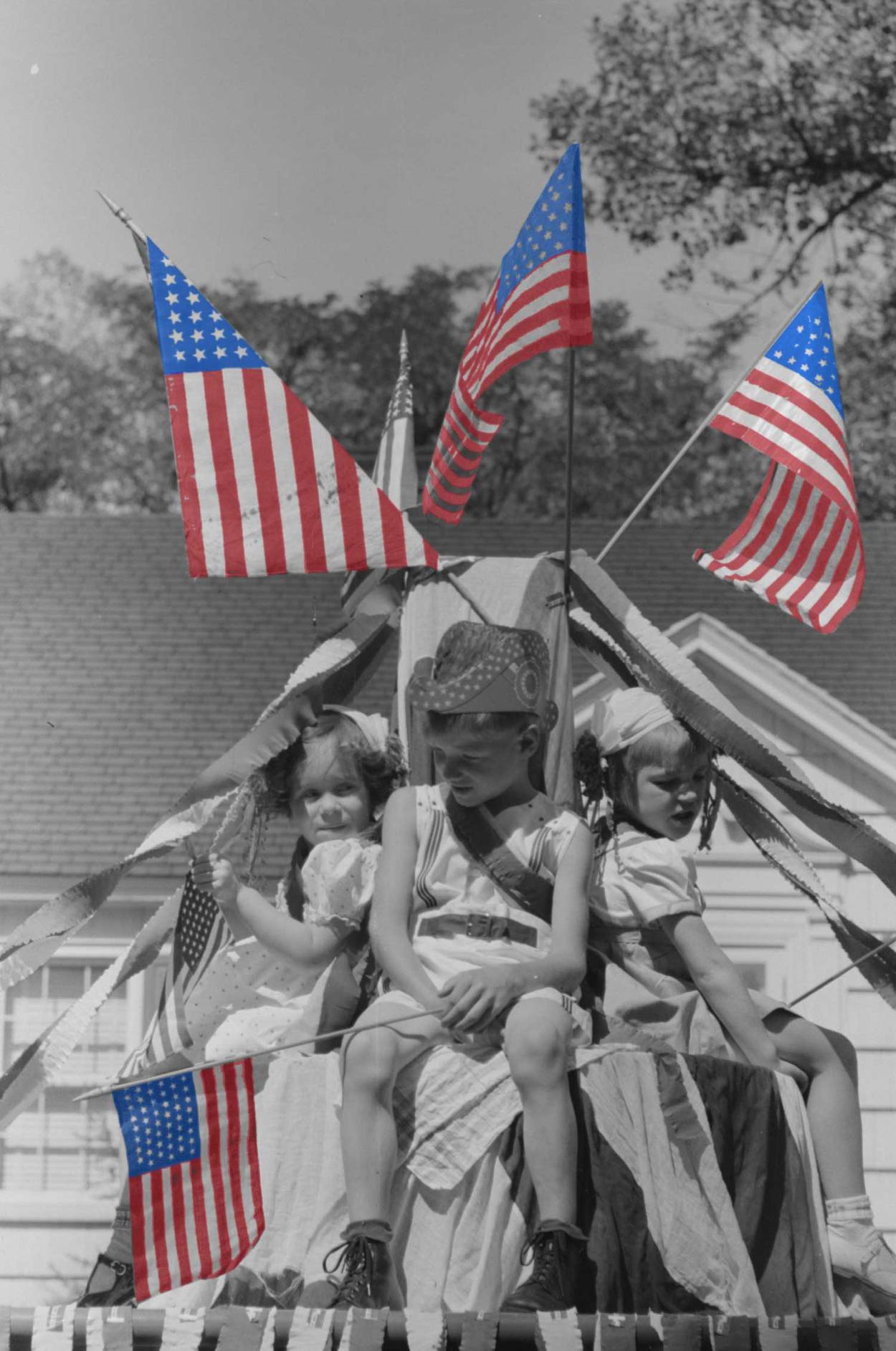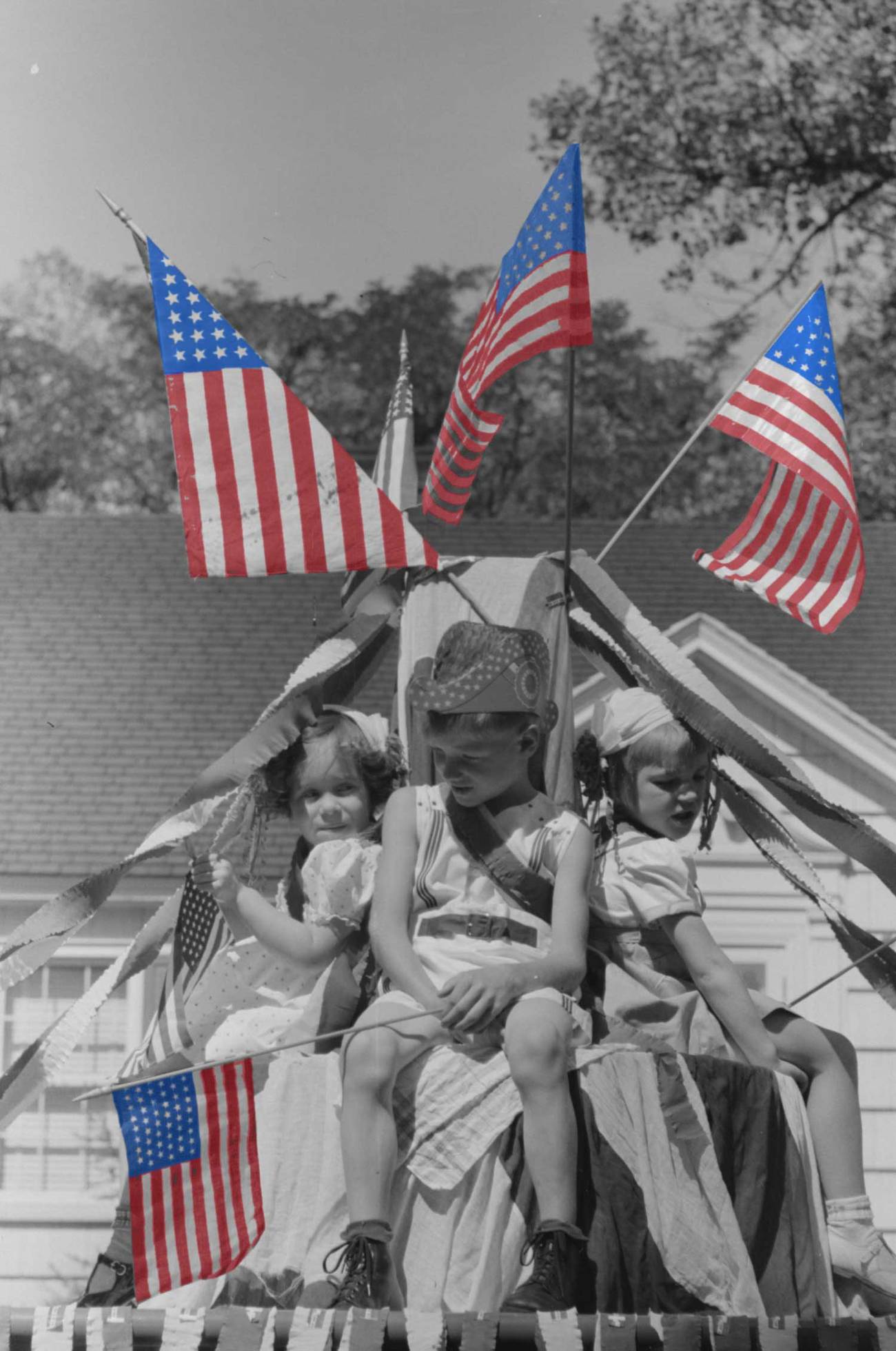Fitting In on the Fourth of July
For Jewish immigrants more than a century ago, Independence Day offered a chance to demonstrate their American identity—quietly




The Fourth of July was no picnic for American Jews of the late 19th and early 20th centuries. As members of a minority religion—a “snail among elephants,” as one American Jew of the 1890s colorfully described his co-religionists, many of whom were also recently arrived immigrants—they sought opportunities throughout the year to demonstrate their fealty to the republic lest their commitment to America be questioned by native-born, white, Christian Americans.
The Fourth of July, a holiday given over to “rampant patriotism,” ranked high among these opportunities. More obligation than occasion, it was tailor-made for American Jews eager to show the colors: a command performance.
Besides, “Uncle Sam’s birthday” was great fun. A day off from work, it was marked by parades, outdoor concerts, baseball games, bonfires, and greased pig contests. Every one of these activities was punctuated, from morning to night, by the sights and sounds of fireworks and “Chinese crackers,” Roman candles, and gunfire from both toy pistols and the real deal.
Between the incessant “crack, boom, and splutter” of explosive devices and the growing number of casualties and even deaths that resulted from handling them, things got so bad in America of the 1900s that increasing numbers of concerned citizens began to wonder “why a nation of apparently sane people should countenance” this annual display of firepower.
As petitions in favor of tightening existing restrictions on firecrackers, or banning them outright, gathered steam, spreading across the country, it didn’t take long before the public hue and cry took shape as an organized social movement known as the “Safe and Sane Fourth.” Working together with municipal officials and civic reformers in the years prior to WWI, it sought to curb the use of these dangerous props and to fill the resulting “awkward silence” with more peaceful, decorous alternatives.
Though some Americans fretted lest “all the ginger [was] taken out of our national holiday,” and rued the absence of its characteristic “pep,” most celebrants went along with, and approved of, attempts to “debrutalize” the occasion.
Possibilities abounded: Two pages’ worth of suggestions ran in the Journal of Education in 1912. Bell ringing, bugle calling, an automobile parade, horse and pony races, the sending up of balloons, “motion picture exhibitions in public squares,” as well as floats, pageants, and tableaux featuring “important incidents” in American history as well as the contributions made by America’s “nationalities” to the republic’s well-being were just a few of the many options which, as The New York Times would have it, were “even better than the old-fashioned Fourth.”
Some of these pointedly wholesome activities were designed to “keep young America on tiptoe from sunrise to bedtime, too busy and interested to bewail the absence of dangerous explosives and firearms.” Others were designed to keep immigrants in line.
On the surface, the Safe and Sane Fourth movement had to do with public safety, with eliminating practices that endangered the commonweal. Who could argue with that? When you look a little more closely, it becomes increasingly clear that this particular civic reform had even more to do with control of the streets, with defining and regulating what constituted appropriate forms of leisure, especially among the foreign-born, rendering its campaign less benign and more disturbing. Safety might have been the pitch; Americanization was the point.
Acting on—and concretizing—the widespread but erroneous belief that rowdiness and noise-making was the handiwork of “aliens,” as immigrants were often called, the Safe and Sane Fourth movement singled out foreign-born Jews for making a “low, vulgar” racket on the Fourth and for endangering everyone else’s health and welfare. Implicit throughout was the notion that they needed to be taught how to salute America and, more damning still, that they were insufficiently grateful to their adopted homeland.
More established, middle-class American Jews, always eager to please, or, at the very least, determined not to rock the boat, went along with that assessment; few challenged the notion that their co-religionists were accountable for the mayhem, or that they could do better when it came to acknowledging their good fortune. In New York, prominent Jewish philanthropists such as Mortimer Schiff and Otto Kahn joined with equally prominent do-gooders such as Lillian Wald and Flora Spiegelberg to see to it that residents of the Lower East Side celebrated the Fourth in an appropriately respectful manner.
Under their watchful eye, a “picture show of a patriotic character” was screened at the People’s Theater, at the corner of Rivington Street and the Bowery; the Declaration of Independence was read aloud in Yiddish, Hebrew, and English at various neighborhood gatherings; a parade composed of representatives of local Jewish organizations marched through the downtown streets, while the kids of the neighborhood were encouraged to engage in organized bouts of flag-waving. No longer did the public experience the kind of “discomfort” they had once felt, observed the Forverts on its front page on July 4, 1911, adding that when “going out on the streets, one didn’t feel the same fear of being shot as one used to feel.”
From time to time, some American Jews bristled at the idea that the foreign-born among them were more in need of civic lessons than the native-born. The “very reverse is the case,” chided the American Israelite in 1914, urging those who thought otherwise to “read and read carefully, Mary Antin’s The Promised Land.” Immigrant Jews, their champions believed, “outdid” their more established compatriots in their demonstrations of patriotism and needed no special coaxing, or distinctive programming.
Other American Jews had different grounds for demurring from the Safe and Sane Fourth’s agenda, taking offense at the sight of floats and other mobile expressions of patriotism like those promoted in 1909 by the city of Springfield, Massachusetts, in which Jews appeared alongside “negroes” (sic). Classifying both in terms of race, they claimed, was regrettable and in “bad taste,” too. And still others rejected any differentiation on the basis of origin, insisting that immigrants be seen alongside the native-born as “Americans without qualifications.”
The Safe and Sane Fourth movement hit its stride around 1914 before fizzling out and going the way of most mild-mannered efforts at civic uplift. Americanization soon became a year-round political project, not just an occasional gesture: more a matter of coercion than of persuasion.
In its day, the campaign made sure the Fourth of July went off with few hitches. In ours, we’ve come to see that celebrations of the nation’s birthday were not all fun and games.
Jenna Weissman Joselit, the Charles E. Smith Professor of Judaic Studies & Professor of History at the George Washington University, is currently at work on a biography of Mordecai M. Kaplan.